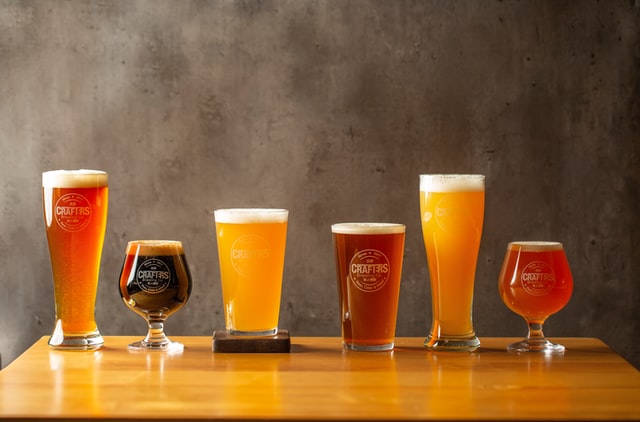Getting that First Batch of Beer Brewing:
by Chef K.T. Murphy
Beer is such a popular beverage because it has such a deep earthy flavor and because the variety of flavors, brands, colors and textures of beers is so diverse that you can explore a new brew each and every time you want a beer and never get bored. And yet most of us pretty much settle on one taste and stick with it. That is until we discover brew pubs. That is when our eyes are opened to the idea that we don’t have to depend on Budweiser and Miller for good beer. It can be made right at home.
Some of the finest beers you could hope to taste are not made in the big commercial factories but in small brewpubs all around the country. So if you have discovered some particularly flavorful home brewed beers, it isn’t long before you might decide to take a stab at brewing a batch yourself. Be careful because once you start experimenting with brewing your own beer, you may become hooked into an addictive hobby that will provide hours of fun as you tinker with your recipes, get new and better equipment and become a true beer expert in brewing your own custom blends for the best-flavored beer.
But it all starts with that very first batch. You might approach that moment when you decide to make your first batch of beer with some fear and trembling. But keep your spirit of adventure and experimentation because, after all, if you bought good equipment, you will get the hang of it. As the wise man said, that the journey of a hundred miles begins with the first step. So to your journey toward becoming a master brewer starts with your first batch.
The process of brewing that first batch is pretty simple actually. Here are the steps to go through to get your first brew underway.
. Gather the ingredients to have them on hand as you step through the brewing process. You don’t’ want to have to stop and go dig something up so have them ready to go when they are added in as the brewing process is underway.
. It all starts with water. One gallon of good water will do. You don’t need specialty water as tap water in most areas of the country does well due to a good combination of minerals that actually makes the beer taste better. So get a gallon of water boiling in a large pot capable of holding 2-3 gallons of water. You need that extra space for adding ingredients.
. The first ingredient to add to the boiling water is the brewing yeast that you bought just for this purpose. The yeast will have specific instructions but in essence, you will mix the yeast with piping hot tap water and stir it in a separate pot or pan until it becomes a thick paste.
. You can prepare the yeast while the water boils and when it’s ready, add the mixture to the water.
. Once the yeast is mixed in well, add the malt extract that you bought for this brewing process. Make sure the malt is mixed in well and dissolved before moving on.
. Hops will come as pellets when you bought them from the supplier so add them when the water is boiling again and allow the entire mixture to boil for another five minutes.
. During this preparation time, get your fermenting equipment sanitized and ready to go. As the brewing process approaches completion, fill the fermenter about three-quarters full with cold water from the tap.
. The strong beer you have boiled is called the “wort” which is now ready for fermenting. Pour the hot wort into the cold water in the fermenter. What you are looking for is an end result of five gallons of mixture in the fermenter so if you don’t find you are at that level, add more water.
The brewing process is done and you can follow the directions for fermenting that are provided with the equipment or that you learn from other resources about the fine art of fermenting beer. Now it’s just a matter of letting nature do what it does to ferment your beer. Enjoy the anticipation as you allow the fermenting to continue and then enjoy the flavor of your very own first batch of home brewed beer.
Enjoy
Please check out my newest book Making Beer at Home. Free to download at Chefmurph.com


